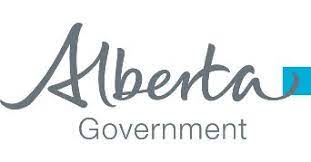Current Temperature
-18.2°C
Province projects $12.3 billion surplus in latest fiscal update
Posted on December 7, 2022 by admin
By Erika Mathieu
Westwind Weekly News
The government of Alberta is anticipating the province will sustain the forecasted $12.3 billion surplus for this fiscal year and has committed to an additional $10.8 billion over the next three years to go towards debt reduction and savings. Figures released on Nov. 24 show revenue for the province is forecasted at $76.9 billion with expenses totalling $64.6 billion.
The surplus will allow the provincial government to pay down $13.4 billion in debt this fiscal year. Following the fiscal update, Premier Danielle Smith said in a statement, “when I became premier, I promised I would continue to balance the budget so Albertans aren’t on the hook for rising debt,” and added, “we will also reach out a helping hand with compassion to those who need it most.”
The 2022-2023 mid-year fiscal update and economic statement highlighted the following fiscal priorities for the province in the coming years: Investment attraction, job creation and economic diversification, paying down debt, focusing on future savings, responsible fiscal management, and inflation relief for “Alberta families, seniors, and of the most vulnerable.”
In a mandate letter to Minister of Finance, Travis Toews, Smith asked him to “keep the inflation and affordability crisis top of mind,” and added, “our cabinet must continue to have a laser focus on job creation and strengthening Alberta’s economy. No matter what the industry.”
The province has also announced an additional $1.3 billion provision for more affordability measures “to help Albertans struggling with the high cost of food, utilities, fuel, and housing.” The earmarked funding totals $2.8 billion over the next three years, and is to be applied to fuel, tax reliefs, electricity rebates, natural gas consumer protection, and provide targeted support for families, seniors and vulnerable.
The update announced 2022-2023 to be the year of the largest single-year debt payment in Alberta’s history, $13.4 billion, with total revenues forecasted at 76.9 billion. $28.1 billion of which is from nonrenewable energy, $24.2 billion in tax revenue, $12.5 billion in federal transfers, and other revenues from government business enterprises forecasted to be $2.5 billion. The document notes investment inco for 2022-2023 is forecasted to total $1.2 billion, $2 billion lower than the budget previously estimated. The Province said this shortfall is because “financial markets have performed poorly with the global economic malaise. Inflation, interest rate increases, ongoing supply chain problems, and the war in Ukraine and its impact on Europe’s energy supply.” The document noted investment income is forecasted to improve to $2.3 billion and $3.4 billion in 2023-2024 and 2024-2025 respectively.
The mid-year fiscal update confirms the funding provided to municipalities for infrastructure support represents the largest portion of the three-year capital plan.
The statement notes non-energyexports remain high and have, “grown at an exceptionally, strong pace so far this year.” The report said, “outside of oil and gas extraction, construction projects are proceeding, despite the higher costs. A strong expansion in the warehousing sector has propelled spending in commercial building construction this year while ongoing projects and renewable energy, utilities and pipeline, and transportation are boosting investment in machinery, and equipment engineering construction.”
Leave a Reply
You must be logged in to post a comment.

